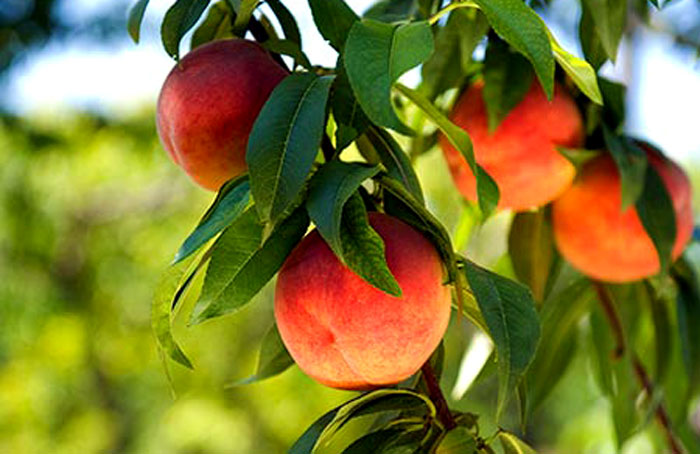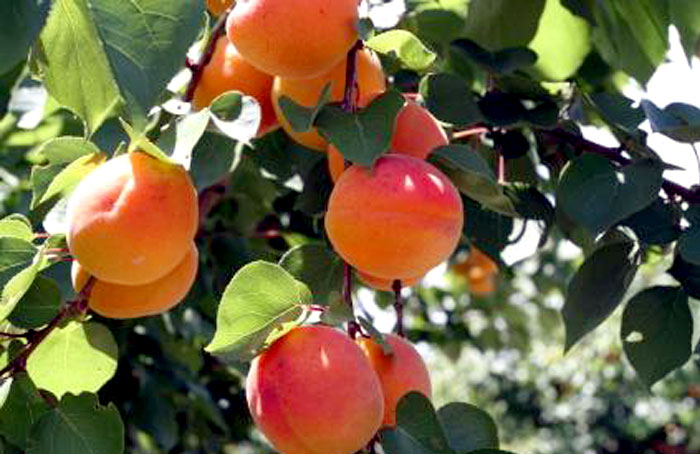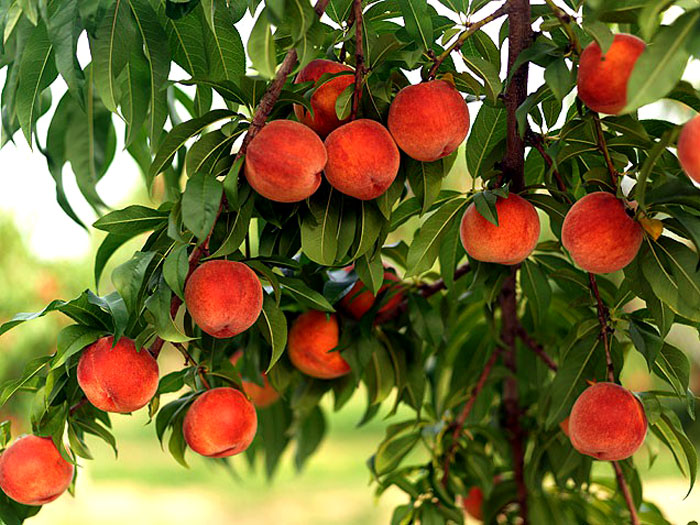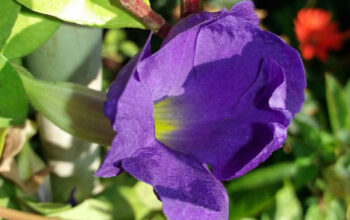Peaches (Apricots)
Learn Apricots, How to grow peaches in pots, Growing Peachtree, Pest’s problem with peachtree, and Varieties of Peach fruit tree and more about this plant. Apricots, peaches (Aadoo), and nectarines are all Prunus family’ fruit trees (including plum in it), they are very close together and easy to confuse with each other.
To grow Peaches (Apricots), first of all, you should be familiar with the climate here. Peach trees can grow in USDA Zones 5 to 8, but they serve well in zones 6 and 7. If you live in these areas, you can choose different varieties of the crop, and if you live in cold areas, there are a few varieties that are hardy for colder, you can choose them. However, these plants are susceptible to both pests. But to grow it successfully, you need to take care of the trees regularly.
Overview Apricots
Scientific name Prunus persica
Common name Peach, Aadoo, Apricots
Plant type Fruit plant
Sun required Part Sun
Blooming time Summer
Planting time Spring
Soil Sandy soil
Soil pH Slightly acidic to natural
Zone 5- 8
Growing Peaches
To plant a peachtree, select a place in your garden where the full sun comes, this tree requires at least 6 hours of sunlight and good air circulation. For this, well dried, moderately fertile soil is good. You should save your peach in cold areas because it can destroy your plant. Dig a deep hole to plant the tree and add a lot of decomposition compost to it. peach fruit
When to plant
The best time to plant a peach fruit tree in spring when the ground can be worked, if you have to plant approximately 1 year old from the nursery, it will be better. Peaches also bloom in spring and are susceptible to late spring frost. Read more.
Planting peachtree
- Apart from 15 to 20 feet apart for standard size peachtree, dwarf varieties are 8 to 10 feet apart.
- Dug almost double the hole of the plant’s root ball so that the union’s part of the graft is about 2 inches above the surface of the soil.
- To keep the plant roots moist, make a shallow trench, it is about 1 ft away from the trunk and catches the water easily.
- Peaches are self-pollinating plants, so you can also plant a single plant.
Varieties of Peaches
If you have a shortage of space then chooses dwarf trees. Champion’s varieties are white flesh and freestones. ‘Hale Haven’ ripens in September, and has freestones; it has yellow flesh, and is good for canning. The donut-shaped, white-fleshed, freestone fruit is ‘Saturn’. ‘Reliance’ is a yellowish flesh, freestone fruit, and is one of the hardiest varieties.
How to grow Peaches in pots
- The Apricots are planted easily in the container and there are many advantages, as it produces flowers at the beginning of March, the fruits come in before many other fruit trees. You can give shelter to the plants in the container when it comes to sunlight, harsh cold, and wind. See the following rules to increase the peach tree in the container.
- To develop peaches in a container then you should choose dwarf varieties because it is not possible to plant an in containers. Dwarf varieties go up to a height of 5 to 15 feet. Red Haven variety is slightly larger and goes up to 15 feet. Golden Glory is a good dwarf species of peach and a hash tree that is only 5 feet long, but it produces large and sparkling peaches in the container.
- If you plant a small dwarf tree, then five gallons of containers will work better, and if you have a long variety of the tree-like Red Haven, then you can use a 15-gallon large container. To put the plant in the container should be good drainage, on the surface in the pot fill 1 inch with gravel or pebbles.
- Fill the container with loamy compost soil or any moderately fertile soil, then plant it in it and fill the remaining soil plants. It is about 2 inches below the container’s ring. After planting the tree thoroughly water. Mulching is good but not necessary.
- Place your container where it can get sunlight for at least 6 hours.
- Apply a liquid fertilizer every two weeks.
- In Container the soil dries very quickly, so give regular water.
- Keep the plant near the sunshine window or in the greenhouse from December to April during the cooler season.
- To encourage your Apricots, you pinch the other small peach. When your tree grows up, it will be established and will produce more. Read more.
How to care Peachtree
Pruning
In order to stimulate new growth of peaches and better fertility, it should be heavily pruned in late winter, thereby allowing the wind to operate independently around the tree. Keep removing dead and diseased and broken branches and root suckers all the time. Read more.
Mulch
Place a layer of 2-inch thick mulch around the peach fruit tree, it will help to keep the soil moist during the drought period and keep your peach trunk safe from a lawnmower or string trimmer.
Fertilizer
After about 6 weeks of planting, give your young tree a nitrogen-rich fertilizer. Add fertilizer and nitrogen once in the spring and summer during the second year of the peach fruit tree. When your peach fruit plant is 3 years old, then give about 1 pound nitrogen fertilizer per year to mature plants. To provide the tree strength, do not fertilize it within 2 months of the first fall frost or when the fruit is mature.
Move the peach plant in the container to the garage or to the safe place to avoid the heavy cold.
Harvesting
Peaches start producing fruits after a few years of planting. peach fruits are ripening in July and can be produced in September of different varieties. When its green fruits change in pitch color, pull them suddenly to see if the peach fruits are mature or not, the ripe fruit will come easily in your hand from the branch. Do not let them fall on the ground, otherwise, the injury will occur and the fruit will rot.
Pest’s problem with peachtree
Apricots plant are susceptible to many diseases and insects. You can avoid many diseases like leaf spot and peach leaf curl by putting resistant varieties. To prevent damage caused by insects such as scales and mites, spray the horticultural oil in the winter before the leaves of the tree out.
Apart from this, problems like aphids, Japanese beetles, leafhoppers, brown rot, powdery mildew, mosaic viruses are also encountered.
Read also:
Blue Chalk sticks growing and caring. Pumpkins in containers, Growing and caring. 8 Best Frugal gardening Tips. Growing African Violets in containers. Growing Spring onion in containers. kidney beans growing and caring. Clematis vine growing and caring for easy tips. How to grow Geranium in containers.
Happy Gardening.
For pin:







